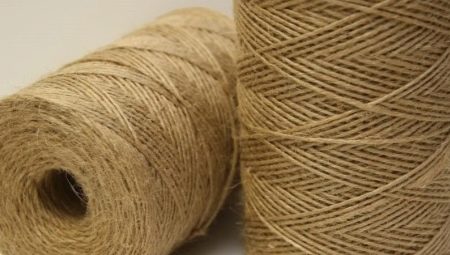Jute rope: what it is, how it is used for needlework, what twine is made of - questions about this material arise quite often. Interior designers highly appreciate the decorative properties of this twine, its versatility, naturalness and environmental friendliness. You can understand the features of using jute rope and do your first crafts using the detailed master classes for beginner needlewomen.
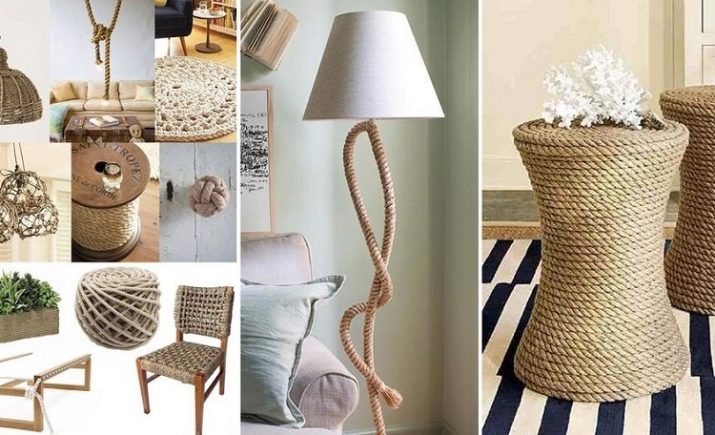
What it is?
Jute rope - a rope weaving product, twisted from 2 or 3 veins. It is made from jute yarn that looks very similar to hemp or tow. This product owes much to its appearance to sailors, who at all times needed strong and strong ropes for rigging ships. Jute production is concentrated in Asia and Indochina. Bangladesh and India are considered leaders in the processing of natural raw materials; other manufacturers do not even grow so many plants of this genus in total.
Jute rope Comes in reels. Twine can have a twisted or braided type of connection of threads, the raw materials for its production are completely vegetable, prepared in a special way: soaked and dried in the open.


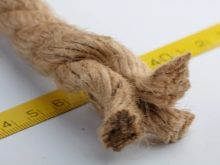
Characteristic and composition
Jute rope is made of fibrous material of plant origin. Depending on the type of product, it can be a thick rope with a diameter of 48 mm or thin twine of 2, 3, 4, 6, 8, 10, 12, 16 mm. To create it, green shoots of a plant called jute are used, which are grown in high humidity in a tropical or subtropical climate.With proper processing, the raw materials are characterized by high tensile strength, retains elasticity and softness.

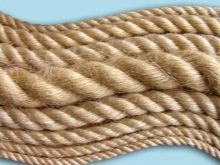
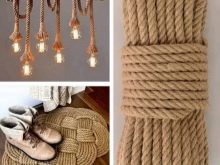
Jute bank cord may be polished or ordinary. The description of this material gives a complete picture of its characteristics. According to the requirements of GOST, it must have a single-thread or two-thread structure, made from 100% natural raw materials. A characteristic difference of such twine is a specific aroma. Often the product smells even after repeated washing.
Also, bank cords do not accumulate static electricity, wickerwork is used as an interventional insulation.
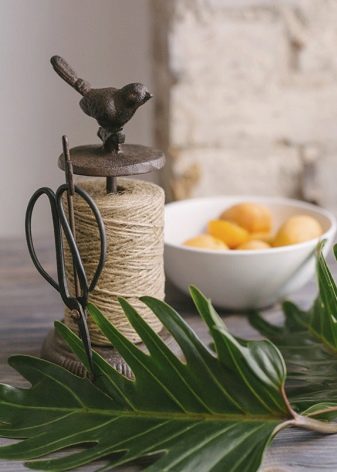
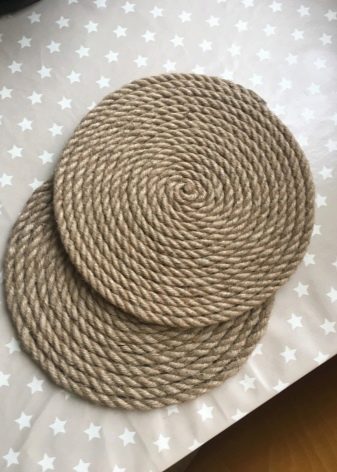
For industrial types of jute rope, an important parameter is tensile strength. It varies in the range from 200 to 1600 kgf, the difference between household and technical products is really great. Twine for home use is supplied in reels of 50, 100, 500 m each. You can find out how much 1 m of rope weighs if you study its marking: for example, an indicator of 1,200 tex means that there are 1.2 kg of product in 1000 m. Large bobbins are quite weighty, from 5 kg or more, they are most often supplied with jute ropes.
Color spectrum knitting twine is wide enough. You can find white, red, green threads, dyed with special compounds. In its natural form, the material has a color from pale straw to saturated gray-brown. A rope rope coated with waterproof clay, braided or twisted, is used as a sealant for cable entry into the pipe. Here, this material acts as an insulator, against stagnation of water.
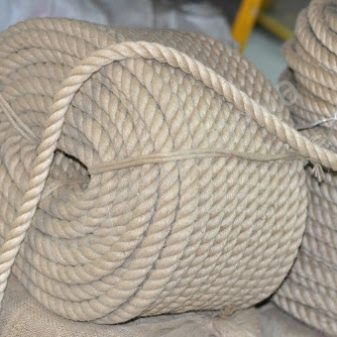
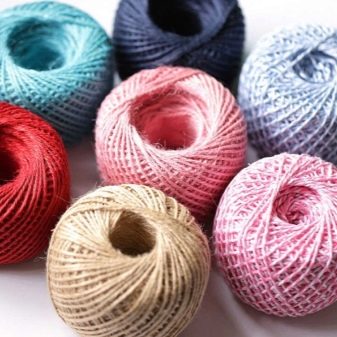
Features of choice
Many needlewomen think about which twine is better to choose and than replace the usual hemp. Jute twine, which is on sale in a wide range, is really well suited for decorative applications. Its thread is very durable, lends itself well to knitting or weaving.
The twisted cord is not so much divided into fibers, as other rope products, provides ease of use.
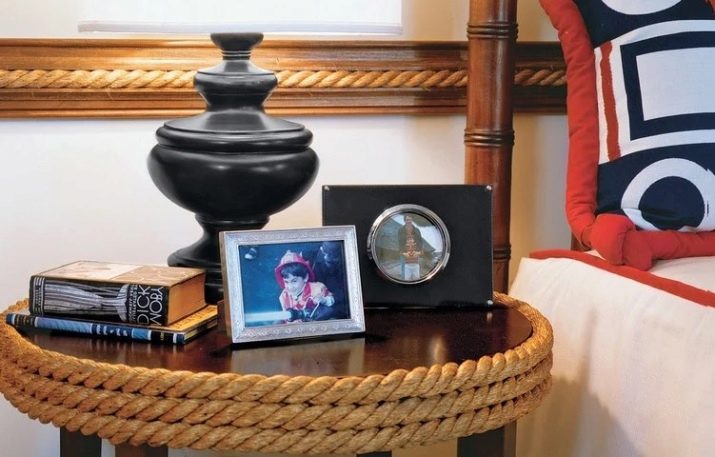
To avoid mistakes when choosing a jute rope, it is important to remember the following points.
- For products that must have a clear shape, threads with a density of 1680-1870 tex are needed. They are suitable for knitting and winding. You can create products in 1 thread or 2, make baskets with the highest rigidity of the frame.
- 1120 Tex - an average. From such a jute rope you can knit bags and other accessories, create objects of interior decor.
- 560 tex jute used to create products that must have a loose structure. It allows you to make knitting more voluminous and airy.
- It is important to pay attention to the presence of odor. Technical types of such a rope are impregnated with oil, which has a rather strong specific smell. Jute also has a natural flavor, but it is not so strong.
- The degree of hairiness of the material. The smoothest is polished jute. An ordinary thread is quite fibrous, you need to look at the degree of its looseness and other characteristics more closely. The polished form is not round, but flattened.
- Appearance. A rope or twine in a skein should not have pronounced irregularities, extraneous inclusions. The color of the highest quality decorative raw materials is white and golden; in low-grade, it is saturated brown.
- The number of threads. There can be 1, 2, 3 or more - the higher this number, the thicker the rope. For decorative use, two-thread and three-thread twine are enough.
These are the main characteristics that you should pay attention to when buying jute twine or thread. After gaining some practical experience, it will be much easier to find the best quality material when buying.
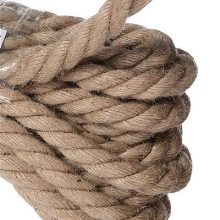
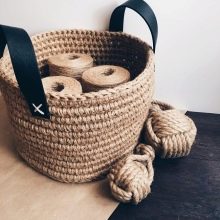
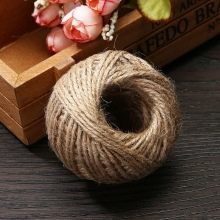
Application
Jute rope is widely used in various fields of life. It is quite popular in construction and in laying communications as a sealant.From it make interventional insulation, insulation at the entrance to the pipe. It is also suitable for wrapping structures in other areas of construction - the material is not afraid of prolonged exposure to the sun, the open air, it is possible to attach suspended parts to it. An oiled wick made from jute lasts a long time.
Most often, jute rope is used in needlework. The interwoven fibers form an interesting texture that is easy to emphasize with other elements in the interior.
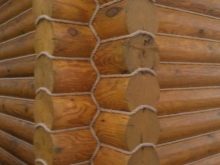


For needlework, both colored thread and ordinary twine are suitable, which can be Easy to tint with acrylics. Using this type of twine, you can make a table with elements of ethnic style, finish the ottoman, wrap a round container, turning it into an original vase.
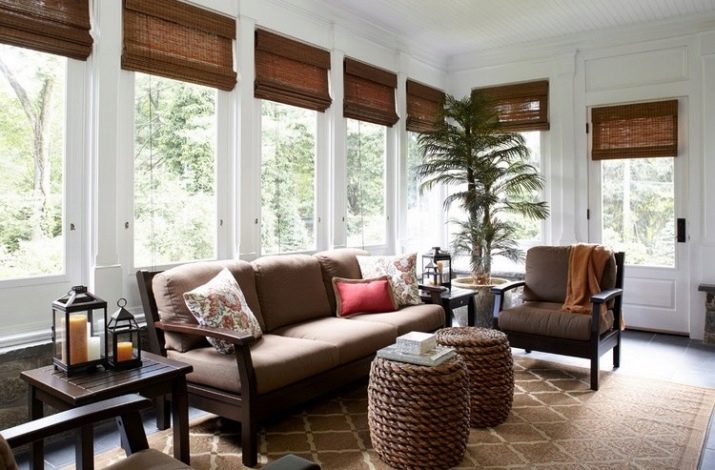
When sending mail, it is jute used when dressing boxes and parcels. This nuance today is actively used by marketers, making gift retro-compositions from craft paper and gray-brown twine. Jute rope is also used for shibari - This Japanese art involves a special form of personal relationship, involving the binding of a partner. But such exotic practices are not common in Russia. In addition, a rope is more suitable for them than a narrow and thin twine.

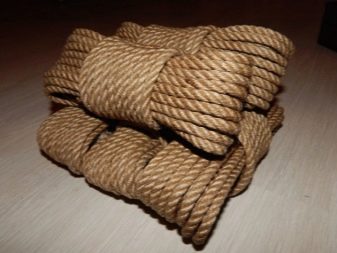
Workshops for beginners
To work with jute ropes you need to have some idea about this material. It can be connected with a thermogun, PVA glue or other water-based compounds, knitted or simply crocheted, knitted. The finished jute product can be easily painted at home with your own hands. That's just before you start It is recommended to prepare the material: washing will help get rid of odor and soften too hard a cord.
Simple workshops are suitable for those who want to try themselves in needlework from jute. Weaving can be the simplest products - rugs, home decorations. With the accumulation of experience, the master will master the patterns, learn how to glue or connect the ends of the rope without a knot.
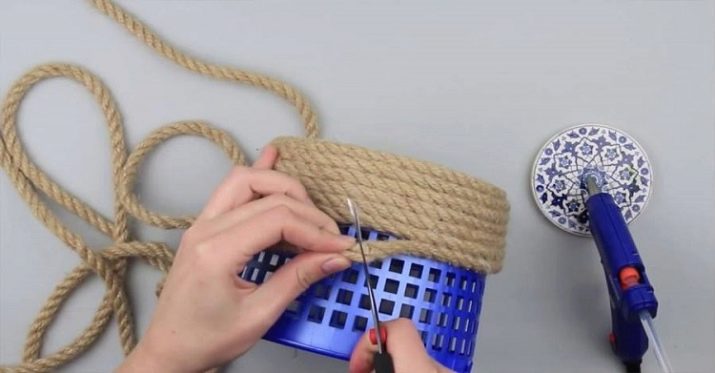
Simple rug
For work, only a thick jute rope and threads for connection are required. The base is formed by folding the rope in a spiral on a plane. Moreover, each layer of the product is stitched with durable threads, providing the necessary connection. It is better not to use glue here, since it will give additional rigidity. The number of turns depends on the size and configuration of the rug - you can give it an oval or round shape, make it large or miniature.
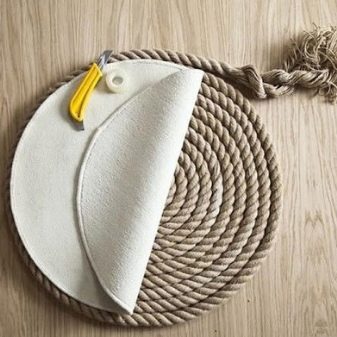
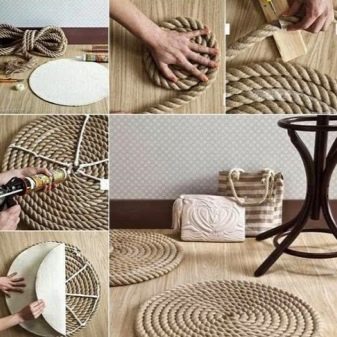
Scarlet Point
In the presence of domestic cats, the problem of grinding their claws faces the owner quite acutely. In order for the animal to satisfy its instincts and not spoil the furniture, one has to come up with alternative options. For instance, create with your own hands a durable and aesthetic claw. The simplest option is done with glue and a base made of wood or thick plywood. It is tightly wrapped with jute, starting from the bottom.
The rope is fixed with hot glue or PVA on the surface of the base. At the end of the winding, you need to fix the end - you can use the bracket from the stapler. At the bottom, attach a stable base, at the top - a small area of plywood or a cat house. The finished claw should dry well, especially if PVA glue was used.
Lubricating the rope with catnip extract will help draw your pet's attention to the new accessory.
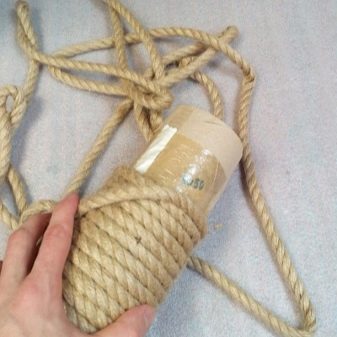
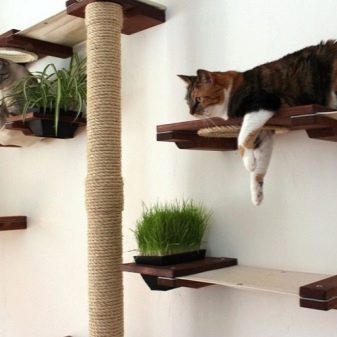
Organizer
To store stationery, you can make an original jute organizer. For work you will need:
- twine;
- scissors;
- acrylic-based paint and varnish;
- glue - PVA, "Master", "Titan", "Atlant" are suitable;
- protective gloves;
- rug for work from silicone;
- base of a rectangular or cylindrical shape.
When creating the organizer, a reel with jute and a workpiece are installed on the desktop. Glue is applied in strips on the surface of the material.Jute twine is attached to it. When winding, the workpiece is placed on the mat and rotates around its axis. The spool of thread remains stationary, it can be installed on the pin-holder.
When winding each next layer, the previous one is slightly pressed to it. So it is possible to make the winding sufficiently dense. The bottom part is also covered with a rope, you need to act from the edges to the center. The finished organizer can be painted, varnished, decorated with natural materials - shells, stones, coffee beans.
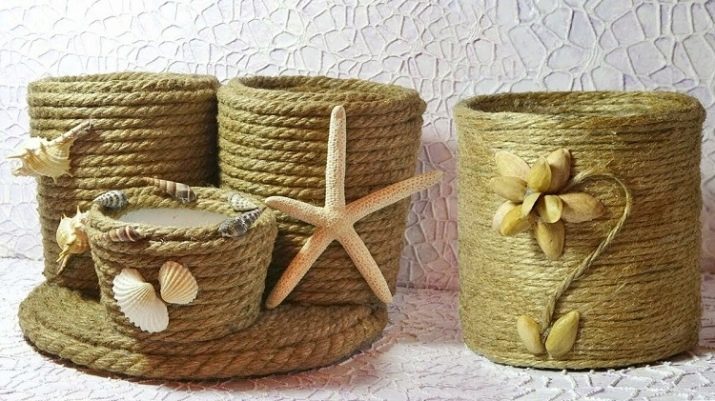
See how to make a bag from a jute rope with your own hands in the next video.
